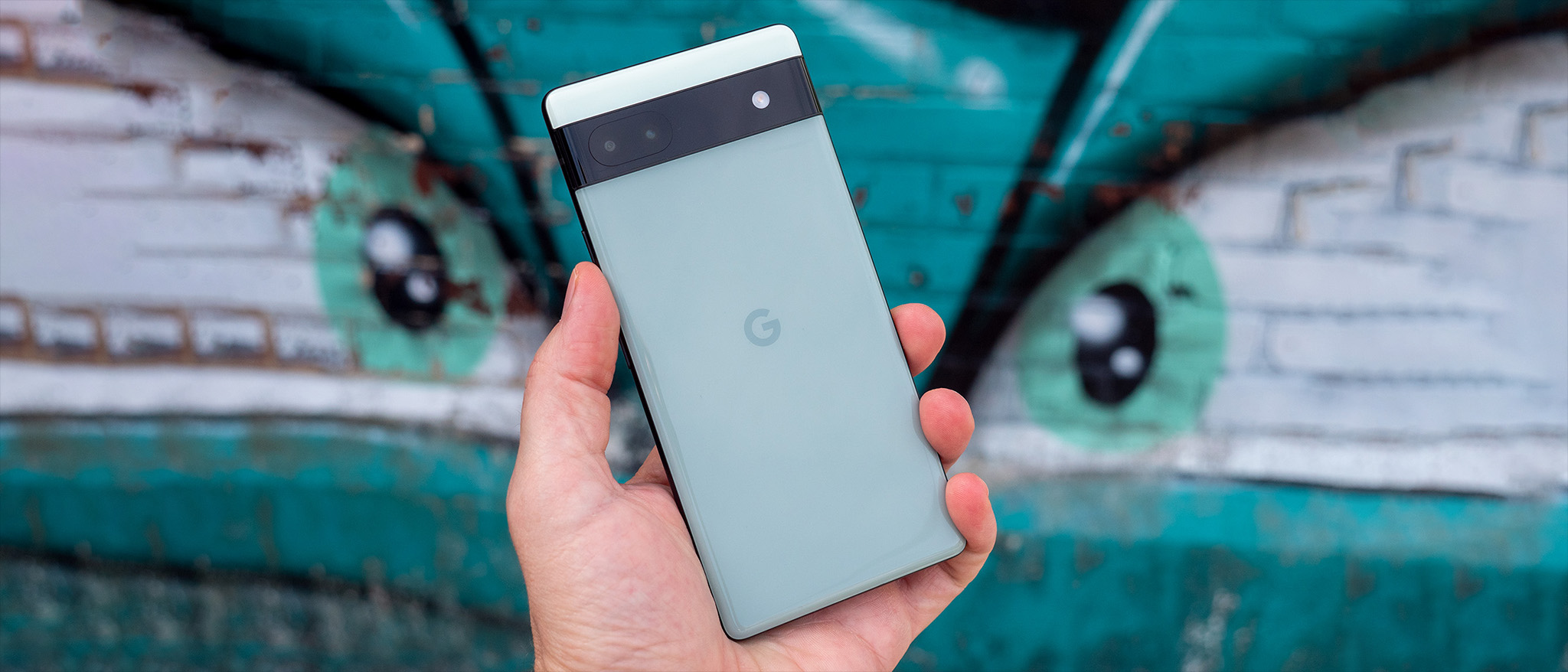Android Central Verdict
The Google Pixel 6a is a triumph for Google and consumers alike. While it's the same price as previous Pixel A-series phones, it utilizes Google's own Tensor SoC, even better camera software, a stunning design, the best haptics on the market, and Google's wonderful Pixel features like call screening and Magic Eraser. The fingerprint sensor is better than the Pixel 6, but it's less responsive than previous Pixel A-series phones. While there's no wireless charging, no headphone jack, and the display is only 60Hz, something had to give to deliver this high-quality of a phone at this price.
Pros
- +
Superb build and design
- +
Google Tensor
- +
Great price
- +
Top-tier cameras
- +
Meaningful features
- +
Glorious haptics
Cons
- -
Fingerprint sensor still isn't the best
- -
No wireless charging
- -
No headphone jack
- -
60Hz display
Why you can trust Android Central
The Pixel 6a is Google’s fourth-generation A-series phone, and features its first-generation in-house processor, the Google Tensor. It’s the first truly affordable phone from Google that features both the Tensor itself, and the unique design from the larger, more expensive Pixel 6 line. While it makes some concessions to get to the $450 price point, Google’s efforts to create a truly remarkable, affordable phone should be applauded.
Now, this isn’t the first time Google has made a great affordable phone by any means. Thus far, just about every Pixel A-series phone has been well worth the money, but none of them have been exciting phones in the way the Pixel 6a is. It’s not too big and not too small. It's not too expensive, but also not so cheap that it has to cut out important features or components. It’s just right in almost all the right ways.
Over the past few years, flagship-grade phones have become less and less relevant for the average person. While it’s fun to follow the cutting-edge escapades of a device like the Samsung Galaxy S22 Ultra — and, indeed, that phone has sold by the bucket load since its launch — reasonably-priced phones have become a far more important market. That’s why it was so vital that Google get the Pixel 6a right. And that’s exactly what Google did.
Note: fixed an error where we stated that the Samsung Galaxy A53 featured wireless charging. It does not.
Update September 2022: Since this review was published, we've learned of strange issues with the Pixel 6a fingerprint sensor that appear to allow non-registered fingerprints to unlock Pixel 6a phones. This is obviously a huge security concern, although we have not been able to replicate the issue in-house. Google has since patched the issue with the September 2022 update. The fingerprint sensor is substantially improved, including faster and more accurate recognition.
About this review
I've been using the Sage colorway of the Google Pixel 6a since July 7, 2022 on the T-Mobile network in North Carolina, U.S.
Since receiving it, there have been no software updates for this particular review unit. As of this review, our Pixel 6a is running Android 12 with the April 5, 2022 security patch.
Google provided the unit to Android Central, along with an official Pixel 6a case, to use with the phone.
Google Pixel 6a: Price and availability
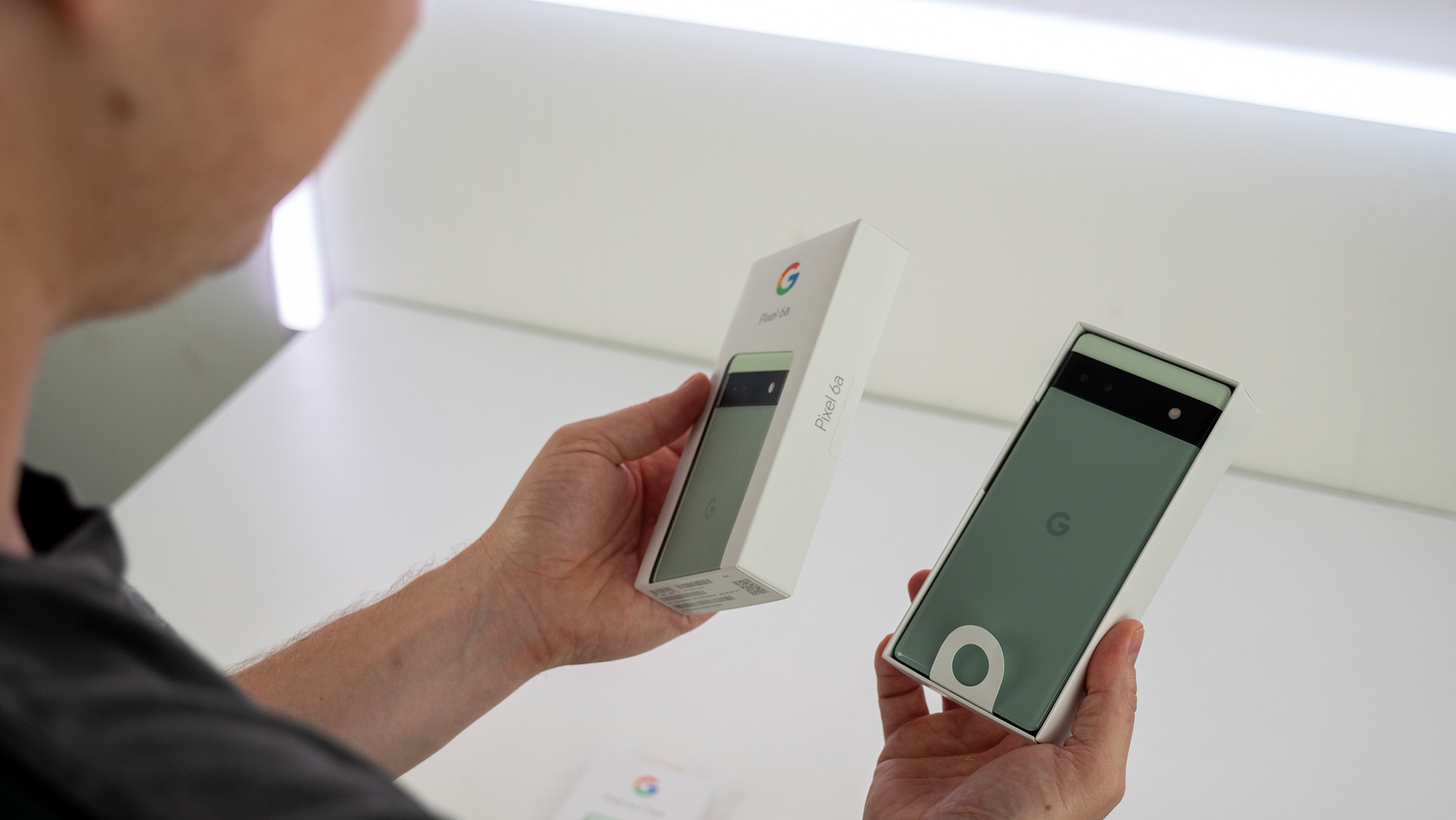
The Google Pixel 6a is available to purchase in 13 countries from July 28, 2022. Google is shipping the phone in three colors — Sage, Chalk, and Charcoal — all of which feature a dual-tone color scheme like the Pixel 6 and Pixel 6 Pro. You can buy a Pixel 6a in the following countries at the following price:
- United States: $449
- Canada: CA$599
- United Kingdom: £399
- Australia: AU$749
- France: €459
- Germany: €459
- India: ₹43,999
- Ireland: €459
- Italy: €459
- Spain: €459
- Japan: ¥53,900
- Singapore: S$749
- Taiwan: NT$13,990
In the box, you’ll find the phone itself, a USB cable, a USB A-to-C transfer dongle, SIM ejector tool, and a few pamphlets. The box is the smallest box Google has ever shipped a phone in, and feels hardly bigger than the phone itself; further sticking to the idea that companies are trying to be more eco-friendly than ever by using less packing material and keeping chargers out of boxes.
Google Pixel 6a: Display and design
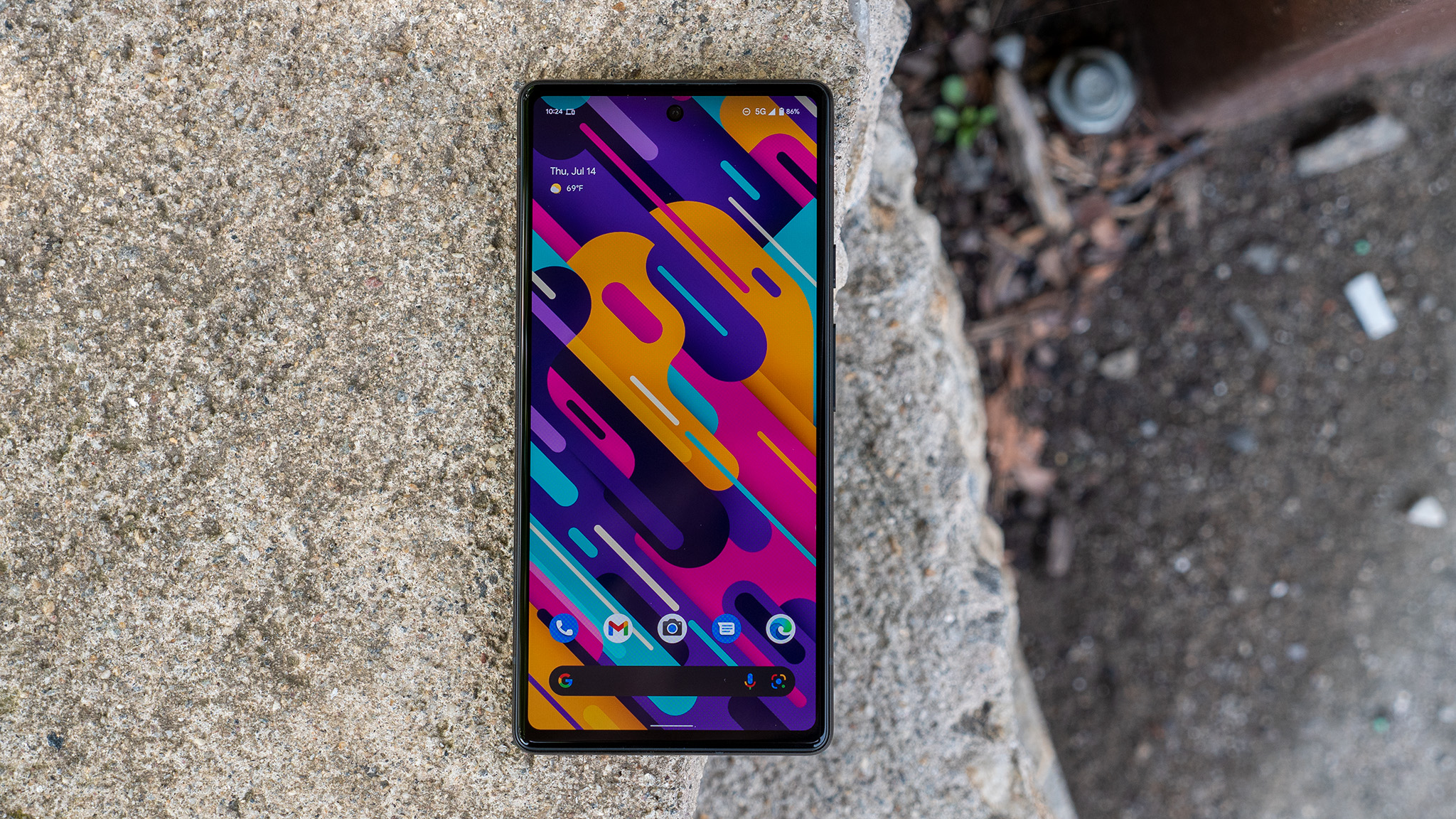
For the past few years, Google's Pixel A-series has, largely, been a boring-looking phone. That all changes with the Pixel 6a, which is based heavily on the Pixel 6's design language. I say heavily because, while it's similar, it isn't identical to the Pixel 6 or the Pixel 6 Pro.
Starting with the similarities, you'll find the same matte black frame all the way around the edge that's on the Pixel 6. Of the two main trains of thought behind phone design on Google's Pixel 6 series, the Pixel 6 look is by far my favorite. This phone in almost every way feels like a shrunken Pixel 6, and that's a very good thing.
Google's Pixel A-series has, largely, been a boring-looking phone. That all changes with the Pixel 6a.
The biggest difference is the camera bar on the back. Yes, it still stretches the width of the device like it does on the Pixel 6 and Pixel 6 Pro, but it doesn't protrude nearly as much as either of those phones. When you slap a case on it, the phone is completely flat along the back.
Otherwise, even naked, this design is far superior in every way to phones that stick the camera humps on one corner of the phone. Aside from a visual aesthetic standpoint, that's largely because the phone doesn't wobble at all when placed on a table. It sounds silly, but that's been one of the biggest annoyances of mine regarding phone design over the past few years.
| Category | Google Pixel 6a specs |
|---|---|
| Chipset | Google Tensor |
| Memory | 6GB LPDDR5 |
| Storage | 128GB UFS 3.1 |
| Display | 6.1-inch AMOLED, 2400x1080 resolution (429 ppi), 60Hz, HDR10+, Gorilla Glass 3 |
| Rear Camera 1 | 12MP, ƒ/1.7, 1.4μm pixel size, OIS, 4K video @ 30/60FPS, 240FPS super slow-mo video |
| Rear Camera 2 | 12MP, ƒ/2.2, 1.25μm pixel size, 114-degree FoV, OIS, 4K video @ 30/60FPS |
| Front Camera | 8MP, ƒ/2.0, 1.12μm pixel size, 85-degree FoV, 1080p video @ 30FPS |
| Battery | 4,410mAh, 18W wired charging |
| Dimensions | 152.2mm x 71.8mm x 8.9mm |
| Weight | 178 grams |
| Water and dust resistance | IP67 |
| Security | Titan M2 Security Chip, In-screen fingerprint sensor |
| Colors | Sage, Chalk, Charcoal |
| OS | Android 12 with Pixel features |
| Update guarantee | Five years of Pixel updates |
It's sort of like the Goldilocks' weight; not too heavy to feel obnoxious, but also not too light so as to feel cheap.
Google has also changed up the look of the camera bar itself from the Pixel 6, as the camera configuration here looks a lot closer to what we've seen from the upcoming Pixel 7. It's much more subtle than the Pixel 7's look but you can clearly see an oval outlining both camera lenses on the back, whereas the Pixel 6 doesn't have any such highlights.
Despite having just a 200mAh smaller battery than the bigger Pixel 6, Google has found ways to reduce the weight of the Pixel 6a when compared to that larger model. 29 grams doesn't sound like much weight on its own, but it's noticeable in daily use.
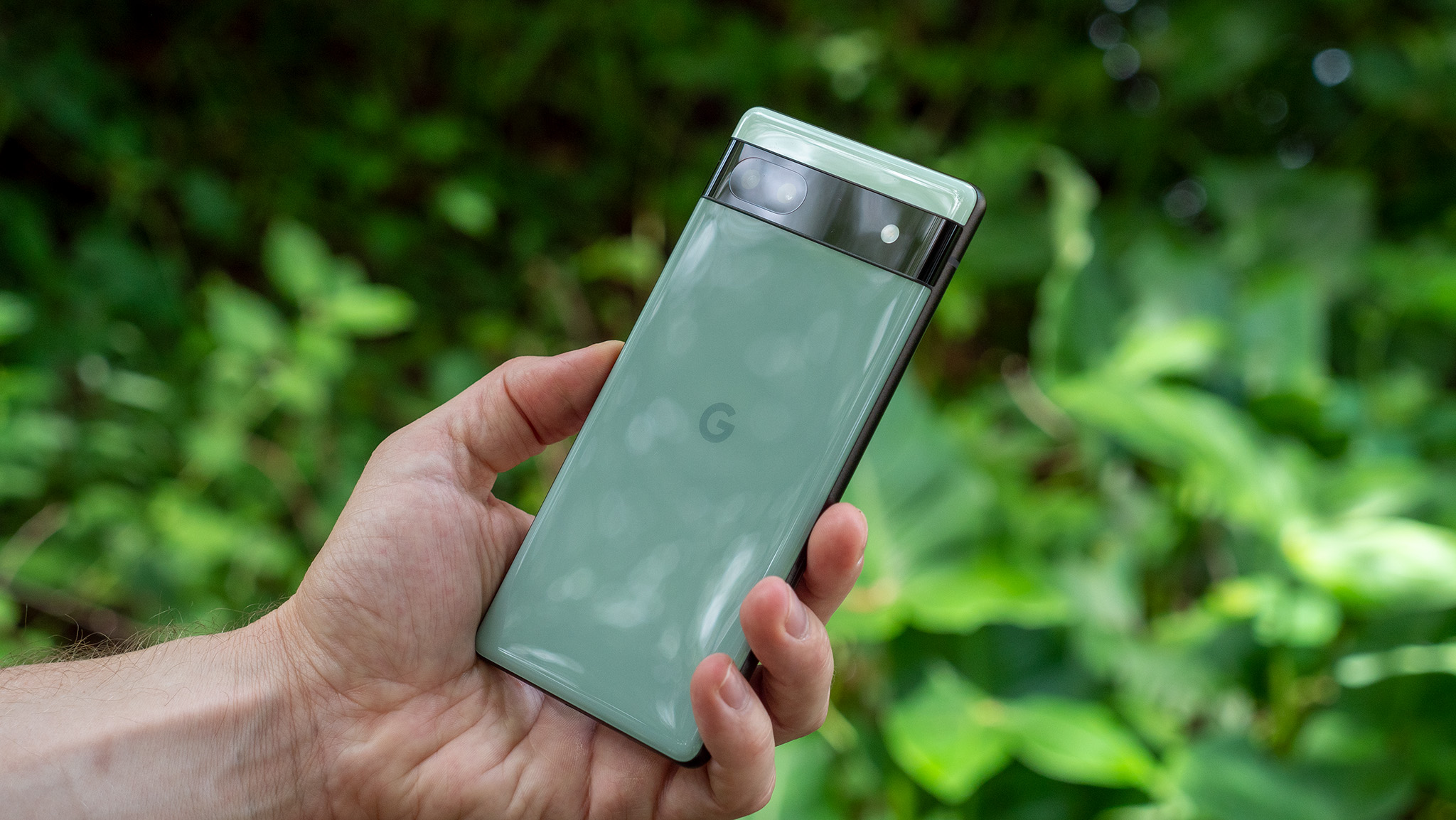
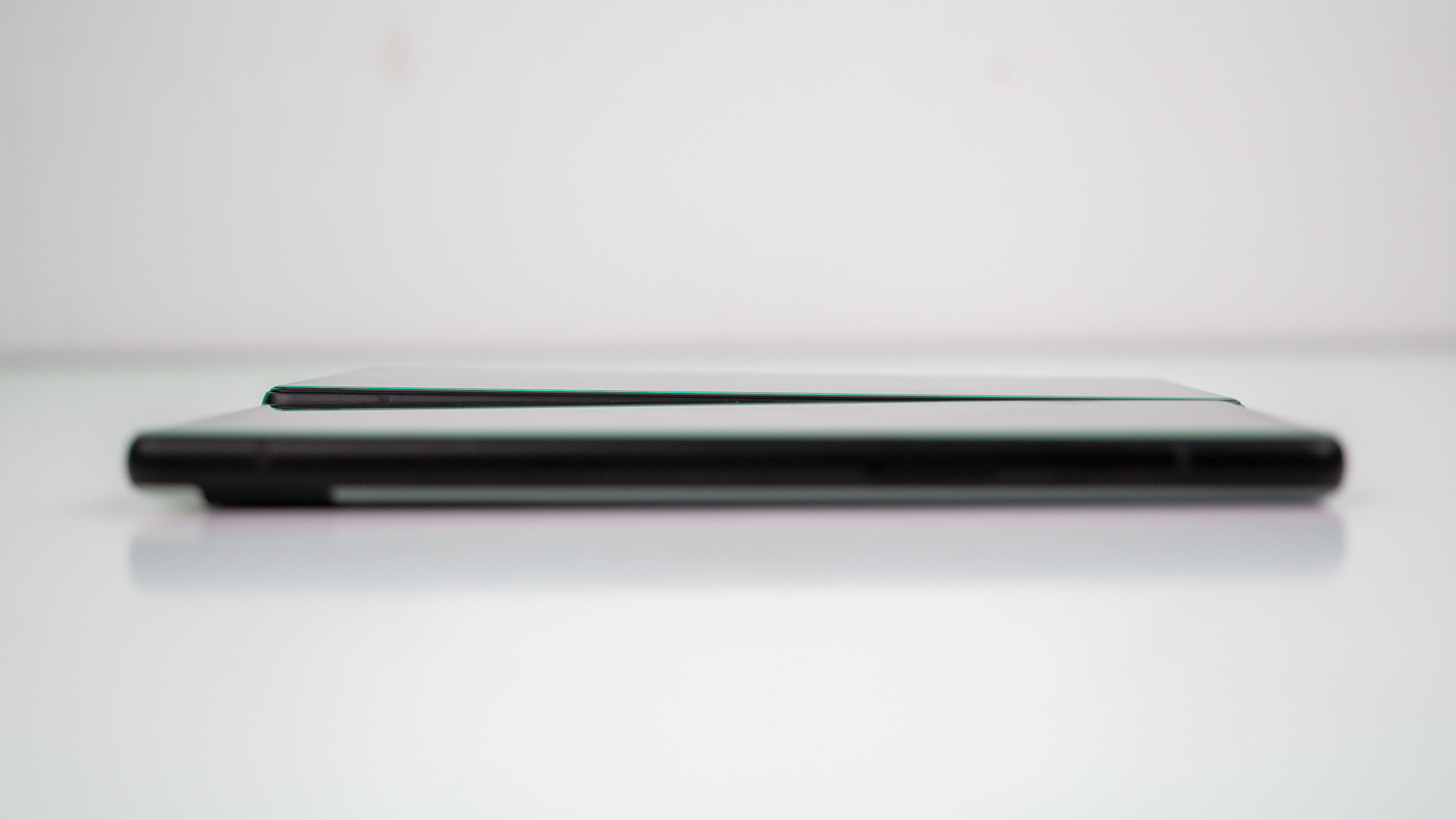
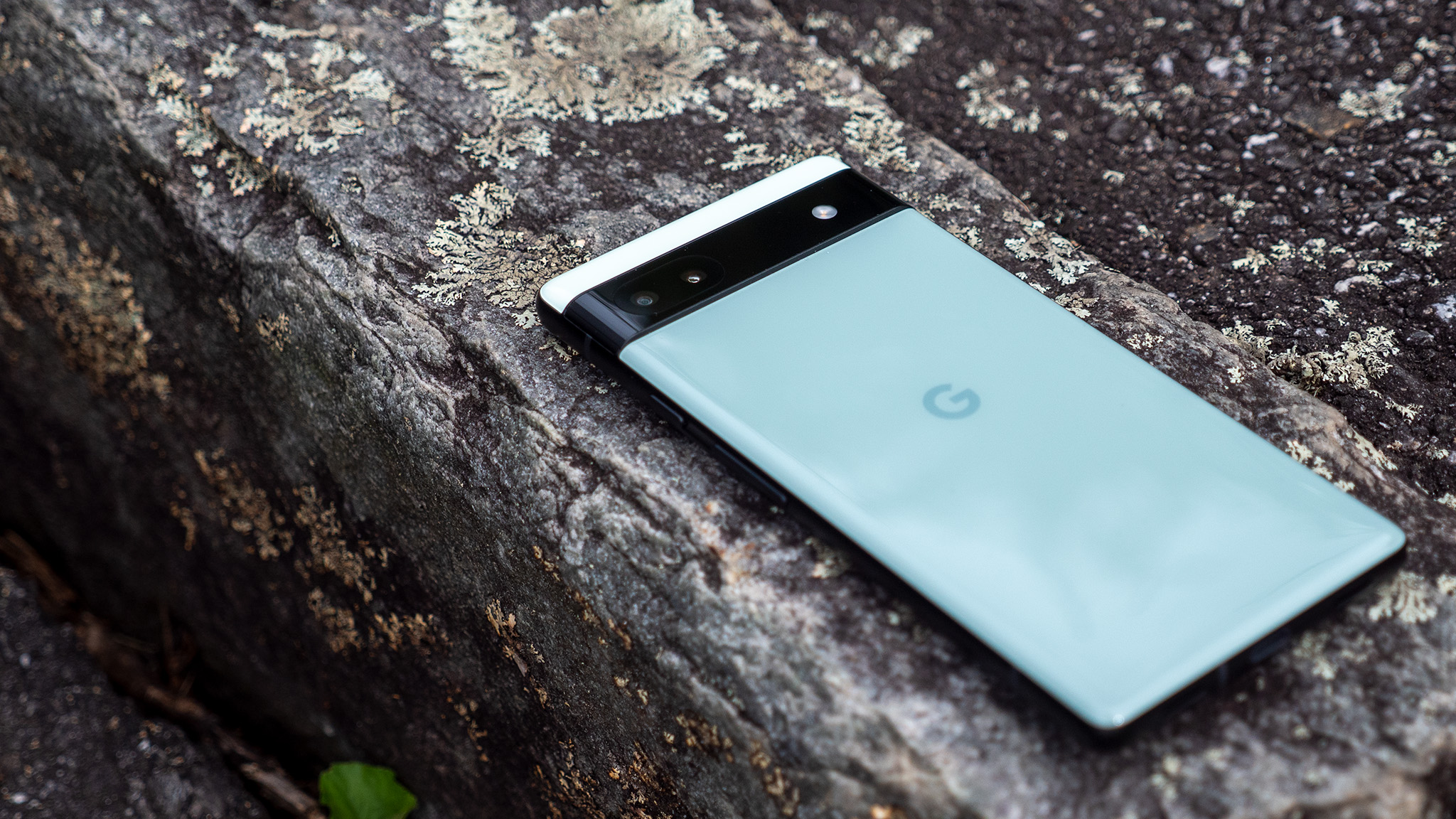

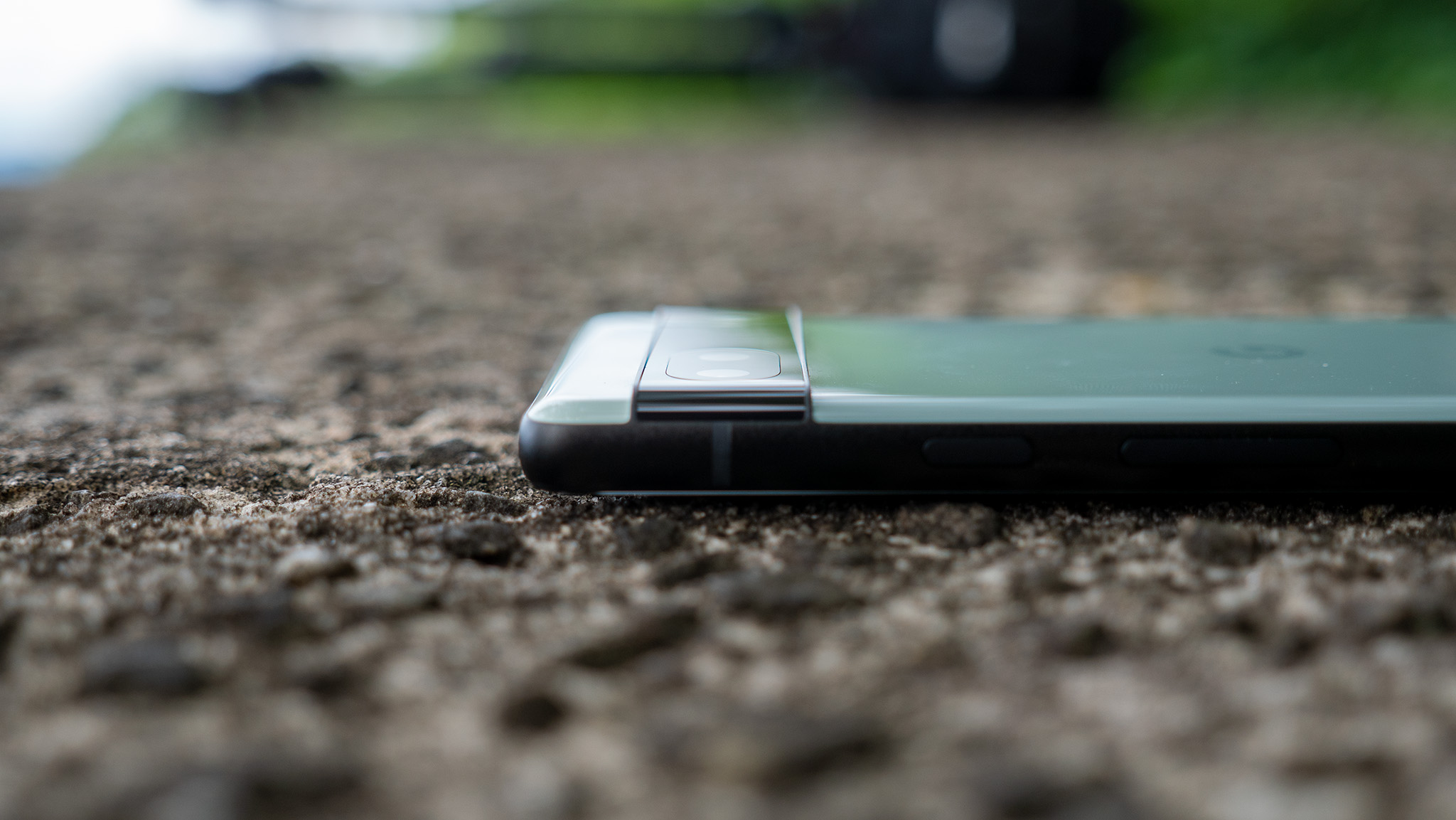
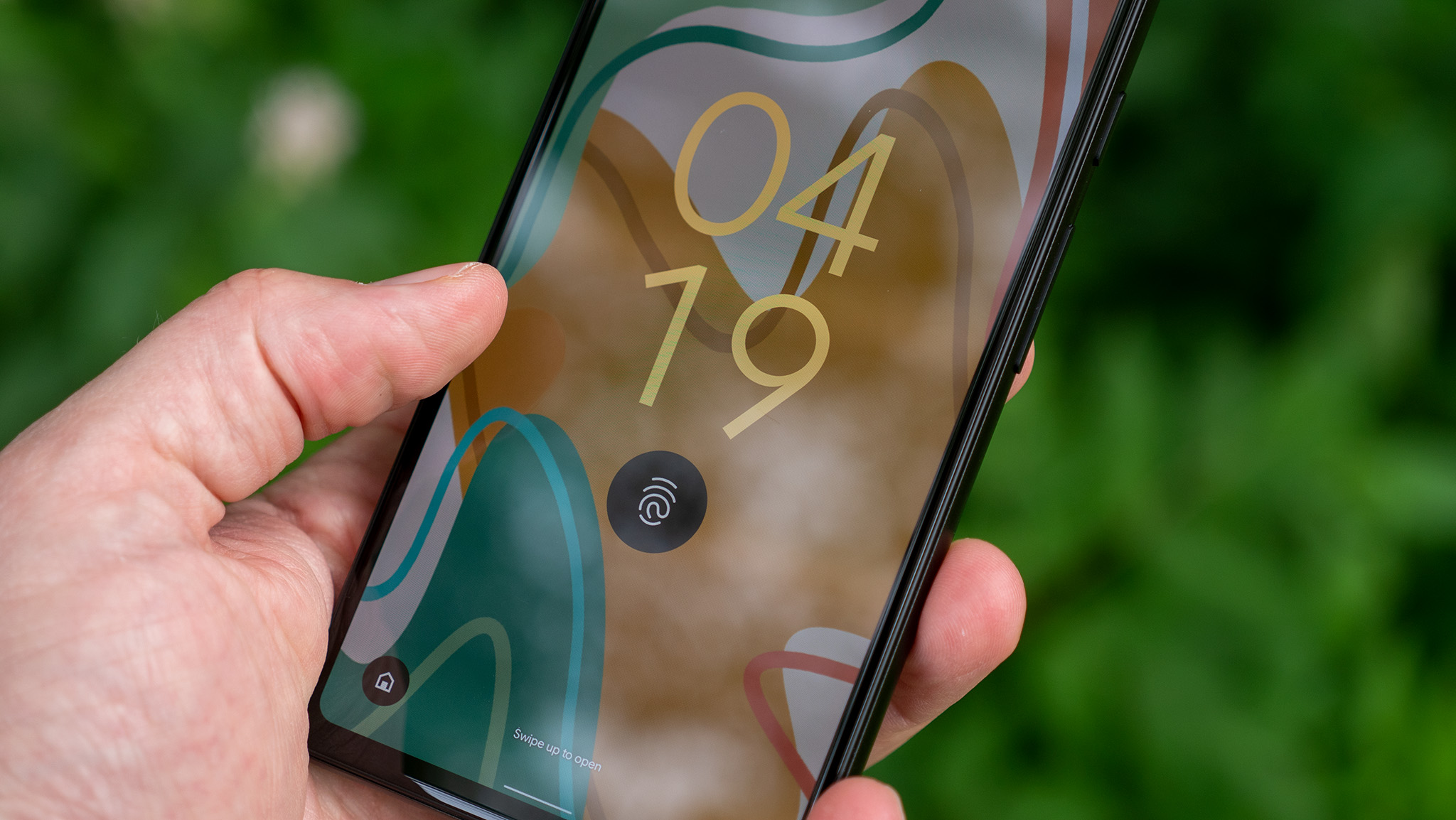
While the Pixel 6 feels like a tank — something that can feign better product quality — the Pixel 6a feels just heavy enough to feel proper. It's sort of like the Goldilocks' weight; not too heavy to feel obnoxious, but also not too light so as to feel cheap.
It's even got those amazing Google haptics built in, which just feel so much better to use with every tap or swipe than any other Android phone on the market.
As a lover of large-screen devices, it's rare for me to appreciate smaller phones. But I don't want to put the Pixel 6a away.
And while I'm on the point of feeling like this is a Goldilocks phone, we need to discuss this size. As a lover of large-screen devices, it's rare for me to appreciate smaller phones. I usually get annoyed by day two and can't wait to put it away and move back to something like a Pixel 6 Pro or the even larger Galaxy Z Fold 3.
But I don't want to put the Pixel 6a away. It's just too good, and it feels amazing to use every single day. I can actually reach across the entire display with my thumb while one-handing it, and that's just not common these days.
It's as much of a step down in size from the Pixel 6 as the Pixel 6 is to the Pixel 6 Pro. Come to think of it, putting them side-by-side even looks a bit like the daddy bear, mama bear, and baby bear.
Of the three models, the Pixel 6a appears (to my eyes) to have the most accurate white balance. White backgrounds on the Pixel 6, by comparison, have a slight hint of green to them. The Pixel 6 Pro, likewise, sports a slightly warmer display that has an edge of pink to its whites.
None of these devices will break records for having the brightest displays on a smartphone, but they aren't particularly dim, either. I had no problems seeing content on the phone during the day — or even in direct sunlight, for that matter — and the flat edges on the display meant there was no odd reflection or refraction to play into the mix, either.
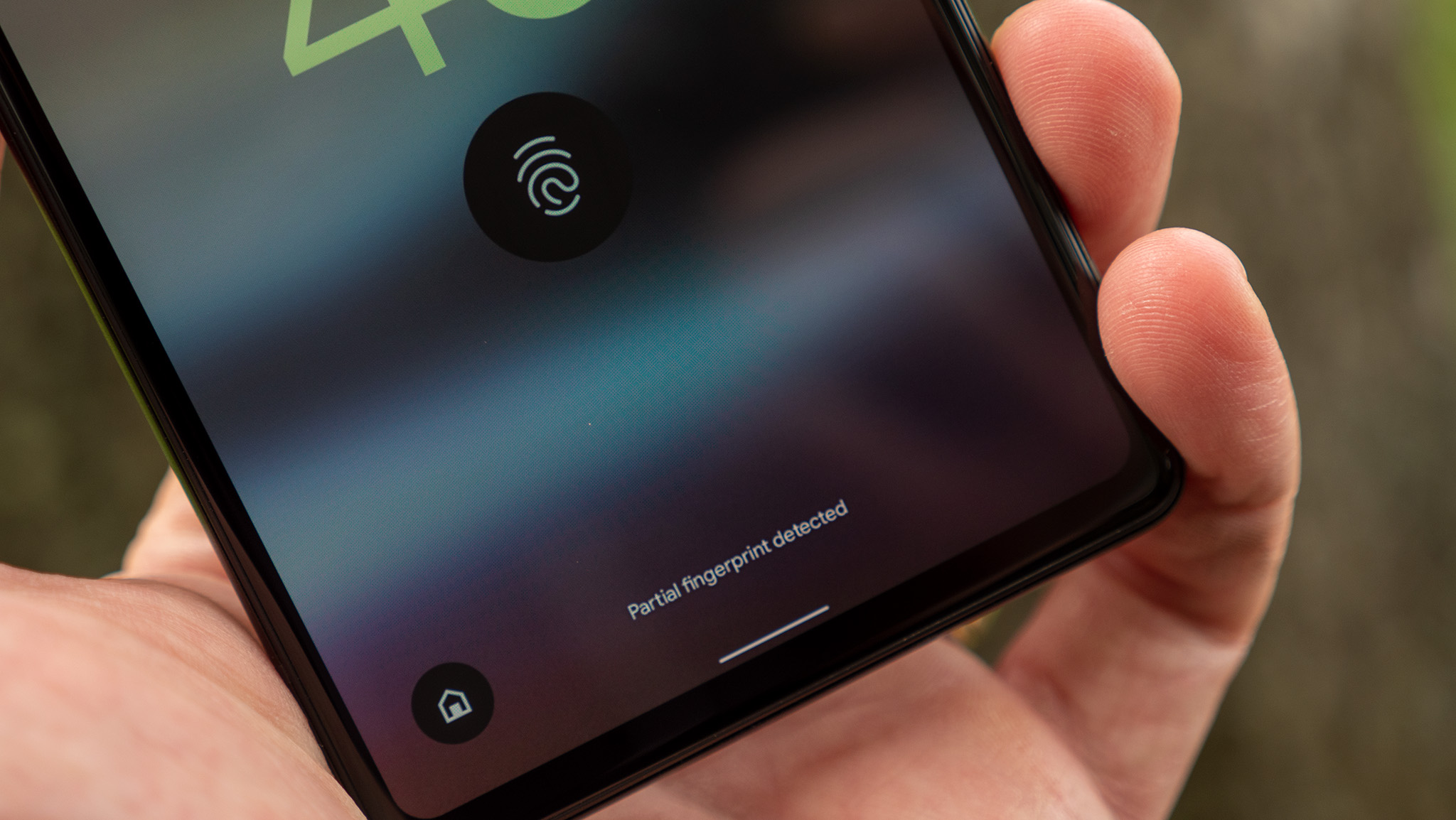
Compared to the Pixel 6, this fingerprint sensor is largely improved. That doesn't mean it's a good fingerprint sensor experience, though.
What's not nearly as good as I had hoped, however, is the in-display fingerprint sensor. Now, compared to the Pixel 6 or Pixel 6 Pro, this sensor is largely improved. I only had it fail on me a few times throughout each day's use on the Pixel 6a, while it fails more often than not for me on the Pixel 6 and Pixel 6 Pro. That doesn't mean it's a good fingerprint sensor experience, though.
Compared to similarly-priced phones like the Nothing phone (1), the difference is readily apparent. I almost never had any issues with that phone's fingerprint sensor. Similarly, other vendors like OnePlus can find ways to outfit their sub-$300 phones like the OnePlus Nord N20 5G with sensors that deliver a better experience.
So far, it seems like Android 13 makes improvements for Pixels on this front, so here's hoping that makes a positive change when it arrives later this year.
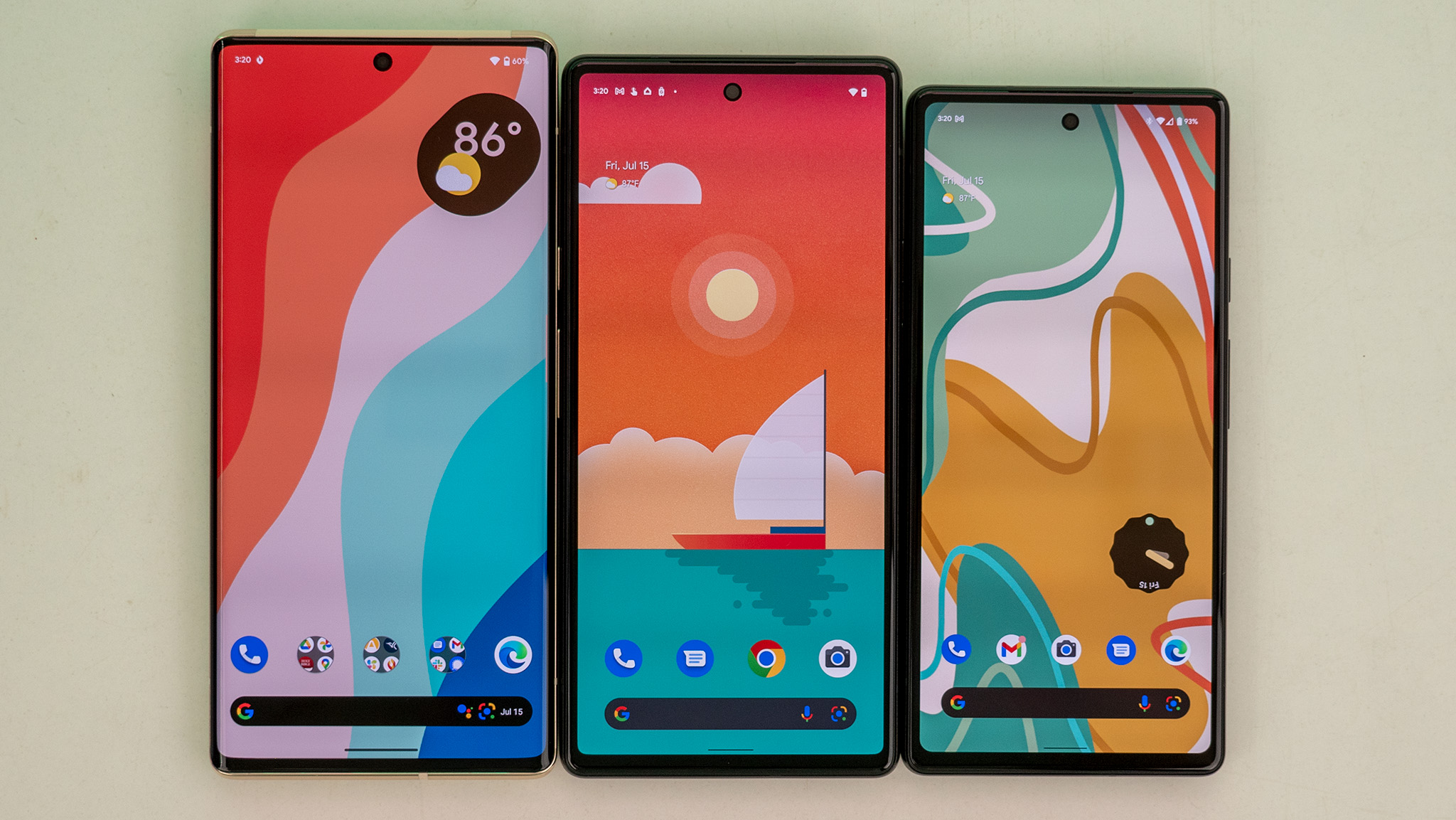
Lastly, I wanted to touch on the fact that this display is only 60Hz. While the Nothing phone (1) pushed the boundaries of expectations for display quality and refresh rate at this price, the Pixel 6a sticks with the tried-and-true 60Hz refresh rate.
That may sound bad when compared to other phones that have a 90Hz — or even 120Hz — refresh rate display (even at this price), my experience with it showed that there's little to be concerned about.
I don't know if it's my imagination or if Google has done something special here, but this 60Hz display feels smoother than other 60Hz displays that I've used recently. I've asked Google if there's any Tensor magic or something else going on under the hood and will update this review if I hear back.
All in all, though, it's a superbly built and designed phone with a great display that'll impress you, especially for the price. Yes, even if the fingerprint sensor could still be better.
Google Pixel 6a: Performance and battery life
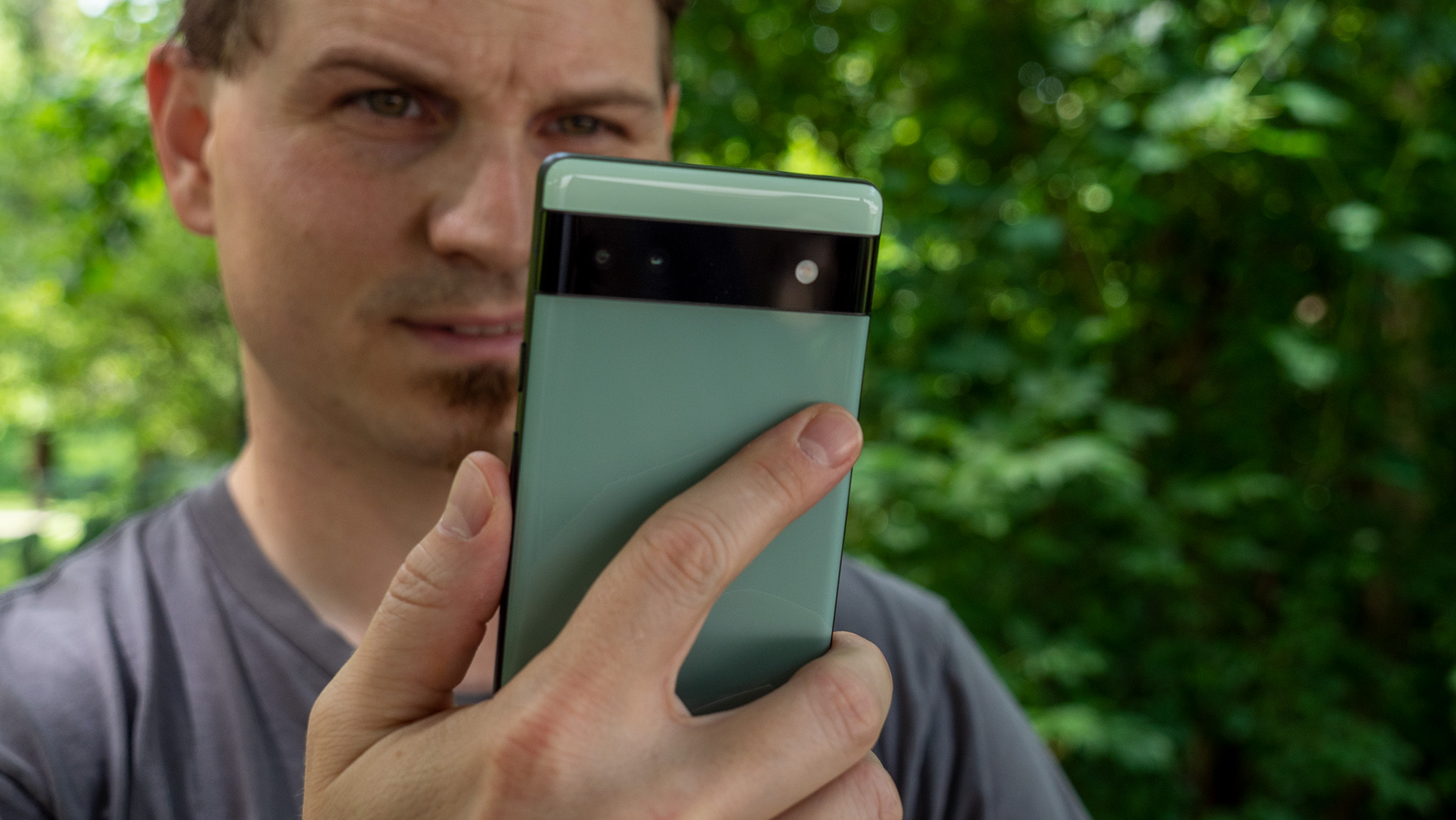
The Pixel 6a is 40-50% faster than most phones in this price range.
Most phones in this price range might be lucky to have a Snapdragon 778G+ like the Nothing phone (1) has. The reality, however, is that most phones end up with a Snapdragon 695 or something lower spec than that in this price range. In a nutshell, the Google Tensor SoC is at least 25% faster than anything else you'll find in a phone at this price and, more commonly, is 40-50% faster than most phones in this price range.
What does that mean for the real world? Let's get the bad out of the way first: Battery life suffers when compared to previous Pixel A-series phones. According to lab-test results from our parent company, Future, the Pixel 6a's battery dies 2-3 hours quicker than previous Pixel A-series phones in the battery stress test. Here's the raw data so you can directly compare.
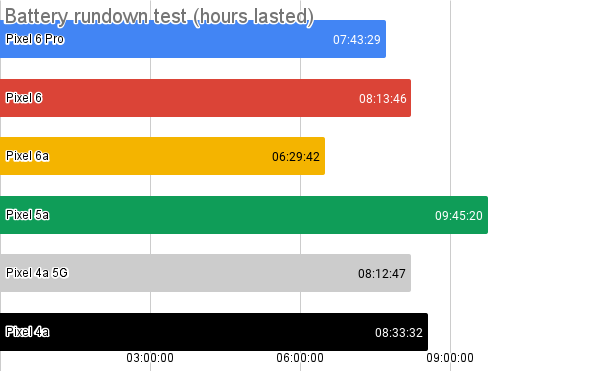
There wasn't a single day where I saw the battery life dip below 30% by the end of the day.
Now, looking at this graph, you would assume this means the Pixel 6a has bad battery life, but that's (thankfully) not true. This just means it doesn't have the 2-day battery life that the Pixel 5a so readily commanded, but it will certainly last you through a full day of use without a problem.
There wasn't a single day where I saw the battery life dip below 30% by the end of the day, even when I was out of the house all day.
Now, with that in mind, Pixels are notoriously picky about the type of charger that you can use. If you can, make sure you either have a Google Pixel charger or one that can deliver USB-PD 18W (5v/3a).
Otherwise, you'll run the risk of the phone charging extremely slowly. I plugged it into a Qualcomm QuickCharge 3.0 charger one night and woke up to find that it had only charged 40% overnight because it didn't like the charger.
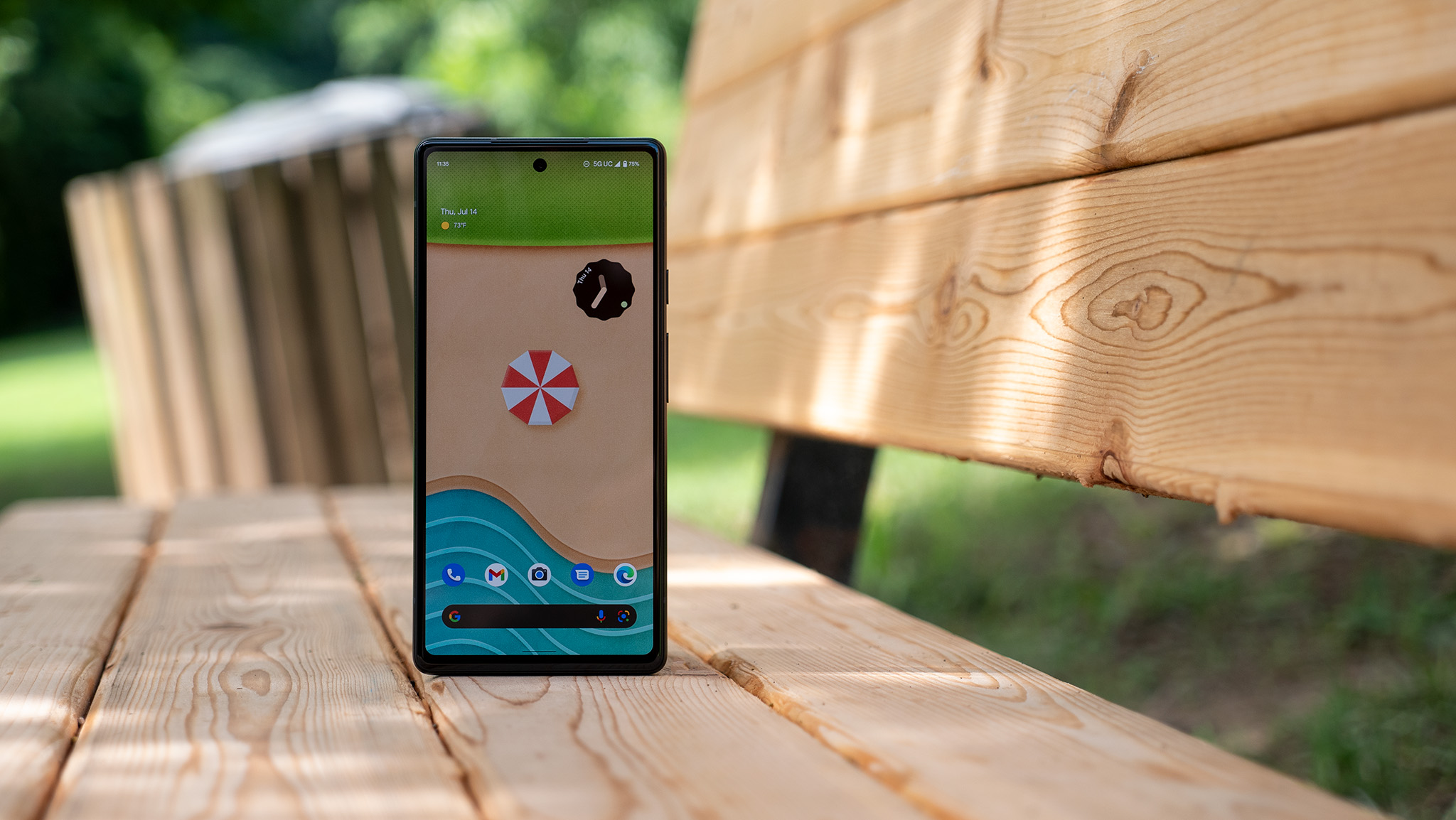
Performance-wise, this is every bit as fast as the Pixel 6 or 6 Pro, even if it only has a 60Hz display. I saw no performance issues at all in the time I've been using it, and have no issue even playing games like Fortnite or Minecraft at full-tilt graphics. The only oddity, in this case, was that Fortnite only let me select 30FPS as the maximum instead of 60. Maybe that'll be fixed in the future.
The one area where I could complain? I saw apps reload from time to time when switching back and forth between them. Given that the phone has 6GB of RAM, this was a bit strange and had me wondering what was going on when it did happen.
I also had some weird connectivity issues with the mesh Wi-Fi 6 network at my house. Google acknowledged this as a known issue and said it's currently working on a fix. As a temporary measure, I used my guest Wi-Fi network, which utilizes a 2.4GHz band.
Google Pixel 6a: Software
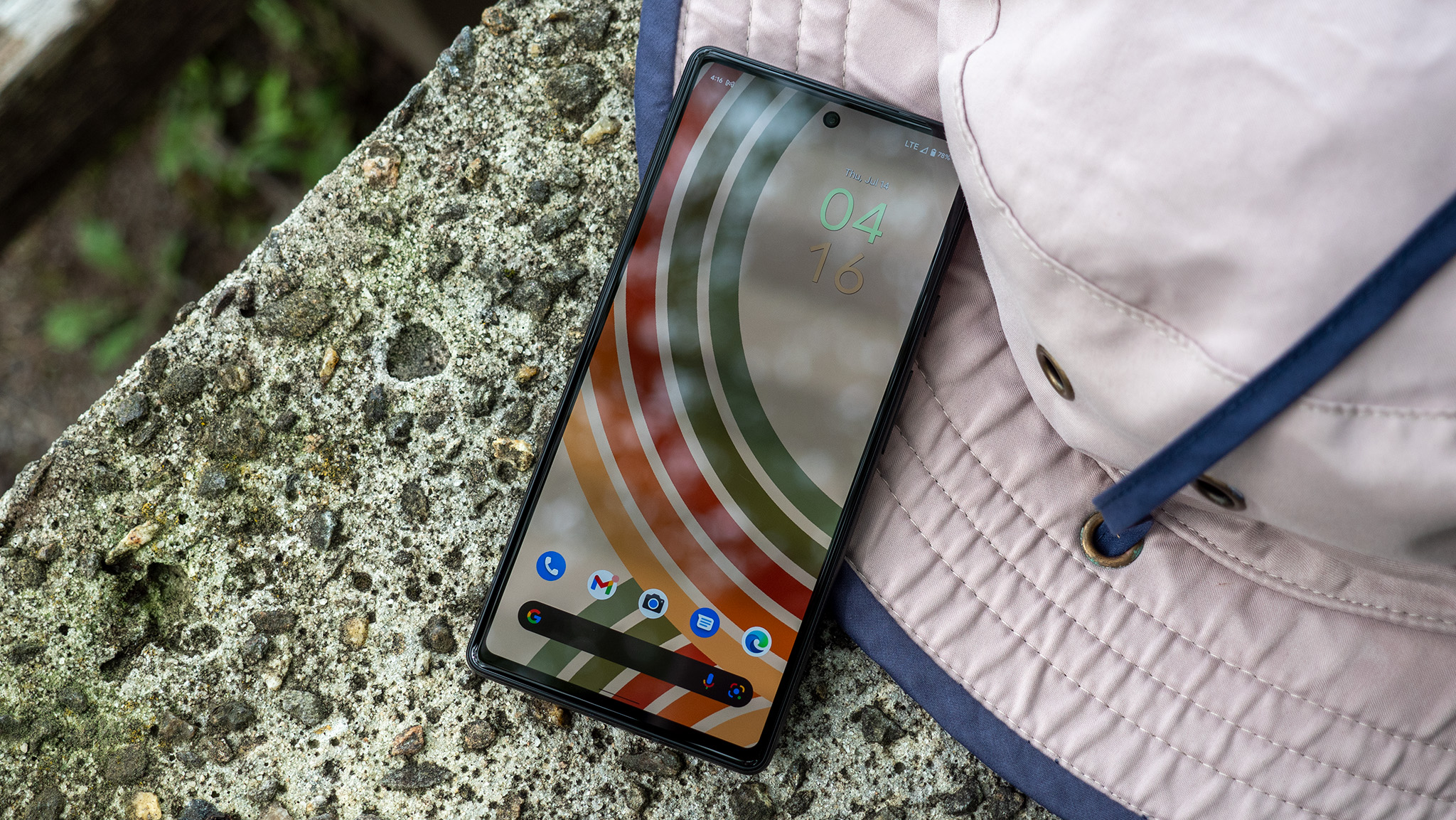
If you've used a Pixel phone recently or read our Pixel 6 review, you'll know exactly what to expect here. Of all the major features that Google debuted with the Pixel 6 — things like Magic Eraser, instant voice typing with Google Assistant, Direct My Call and Hold for Me, and Live Translate, to name a few — the only one that didn't make it is the Motion Photos mode in the camera.
Nothing else is different at all about this experience, and that's something to celebrate. After all, if you're paying half the price of a Pixel 6 Pro, you would expect to be missing some big hardware and software features, right? In this case, it's just the hardware that has seen any sort of major change with the price drop.
Of course, Google's Material You theming is baked into every Pixel, and offers automatic color changing for supported apps and the entire system UI based on the wallpaper you choose on the home screen.
The upcoming Android 13 update will add even more color choices to the existing palette as well. This drives home the idea that Google's Pixel phones look and feel more like your phone than just another Android device.
Google Pixel 6a: Cameras
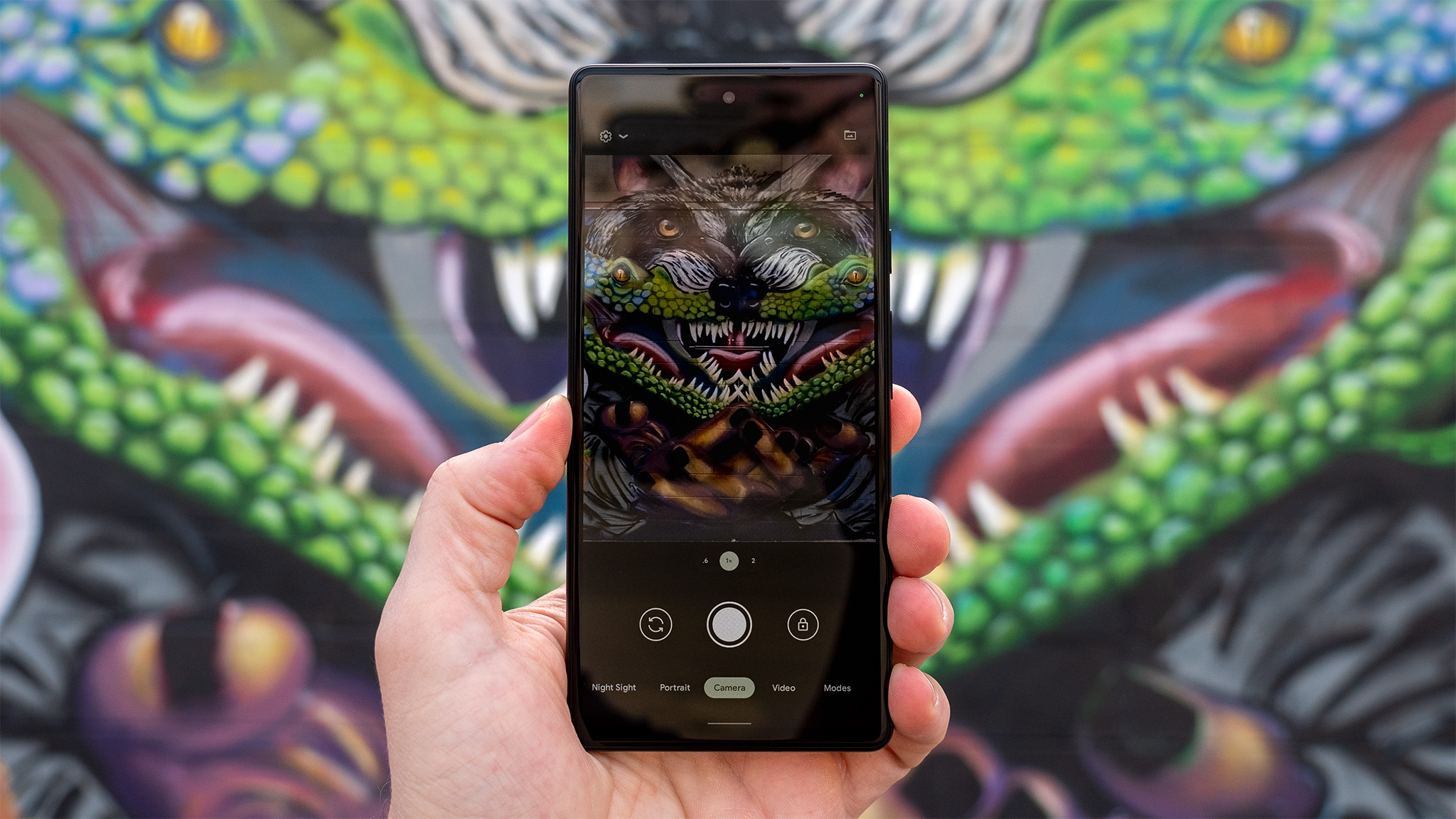
By saving $150 over the Pixel 6, you’d probably think the camera is the first big downgrade you’ll encounter. If you read nothing else in this review, know this: The Pixel 6a’s camera is every bit as good as the Pixel 6’s camera. Yes, that includes the front-facing camera, as well.
Only in very rare situations does the Pixel 6’s considerably newer sensor produce better photos and, even then, you really need to nitpick to see any kind of difference. That's pretty astounding given how much of a difference we saw in quality when the Pixel 6 debuted, but it can likely be attributed to one big change that Google made with the entire Pixel 6 series: the Google Tensor processor.
Only in very rare situations does the Pixel 6’s considerably newer sensor produce better photos and, even then, you really need to nitpick to see any kind of difference.
See, while previous Google phones utilized a Qualcomm processor and a Google co-processor, Google made very sure that its image processing capabilities on Tensor were above and beyond what any other Android phone could offer.
If Pixel phones were known for one thing alone over the years, it was their camera quality.
Whether you were taking pictures of your food, your kids, your pets, or your amazing evening out, Pixel phones were the one series of phones you could consistently rely on to give you a good photo. Not just a better photo than other phones. An actual good one.
You might save money by choosing a Pixel 6a over a Pixel 6, but that cost savings isn't going to cost you a good camera. But don't take my word for it, let the pictures speak for themselves.
Pixel 6a camera vs. the Pixel 6 camera
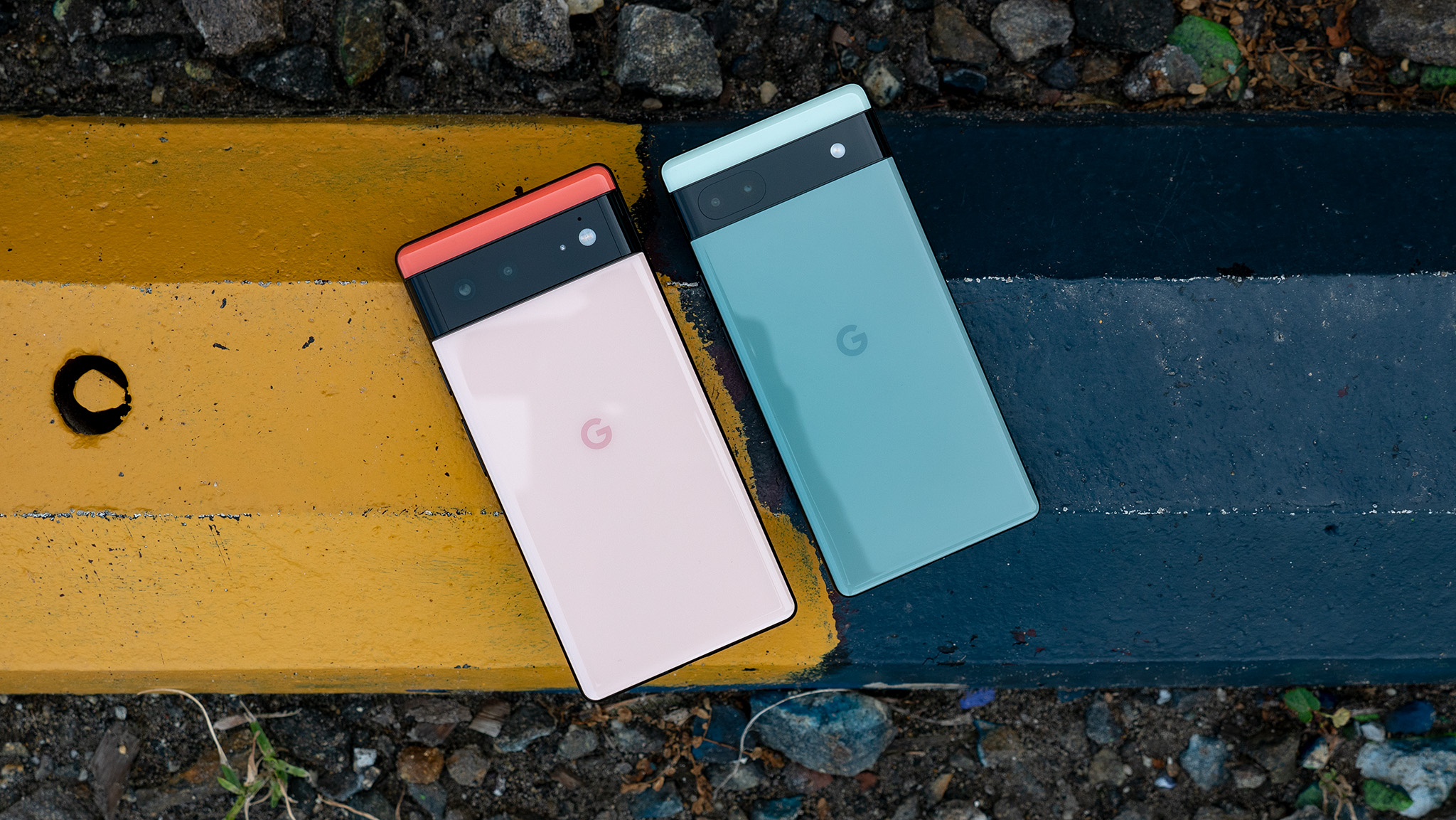
It's paradigm-changing to use a camera this good on a phone this inexpensive.
The only area where you'll see any sort of downgrade is when zooming into a subject. You'll find that 2-3x zoom is where the only real difference between the Pixel 6 and 6a lies and, even then, the difference is minute even when zooming way in. If you want better zoom, you'll have to pay a lot more for a phone with an optical zoom lens. Here's a solid example at 1x:
And then again at 2x, where you can notice increased detail on the Pixel 6 image in the treeline:
Lastly, at 7x, the maximum digital zoom for photos. At the least, the Pixel 6a looks more like a proper camera to me, while the Pixel 6 has some clear digital sharpening happening as a result of a higher megapixel sensor:
The wide-angle lenses on back produce largely identical results, as well.
I found that the Pixel 6 produces better results in some low-light situations, like this nearly dark photo with only one light source at the top of the stairs.
But all other night mode shots that I took came out essentially identical between the two phones. Here's another low light shot indoors at night, and although it's not nearly as dark as the previous shot, it was still dark enough to trigger the Pixel camera's automatic night mode setting.
If anything, it seems that the Pixel 6a's newer camera sensors do a better job of achieving correct white balance, while the Pixel 6's older sensors consistently produce images with a pink or warm hue.
Now, while the rear cameras differ greatly between the Pixel 6 and 6a, the front-facing camera sensor is identical. The only difference is in the lens itself, which can be seen in the slight differences in the images below:
This last one taken at dusk shows a bit of a difference between the two that can't really be explained. Same processor, same camera sensor, different results. I've taken more than a few shots like this where the Pixel 6a's image is superior to the one on the Pixel 6, so this isn't a one-off example.
Google Pixel 6a: The competition
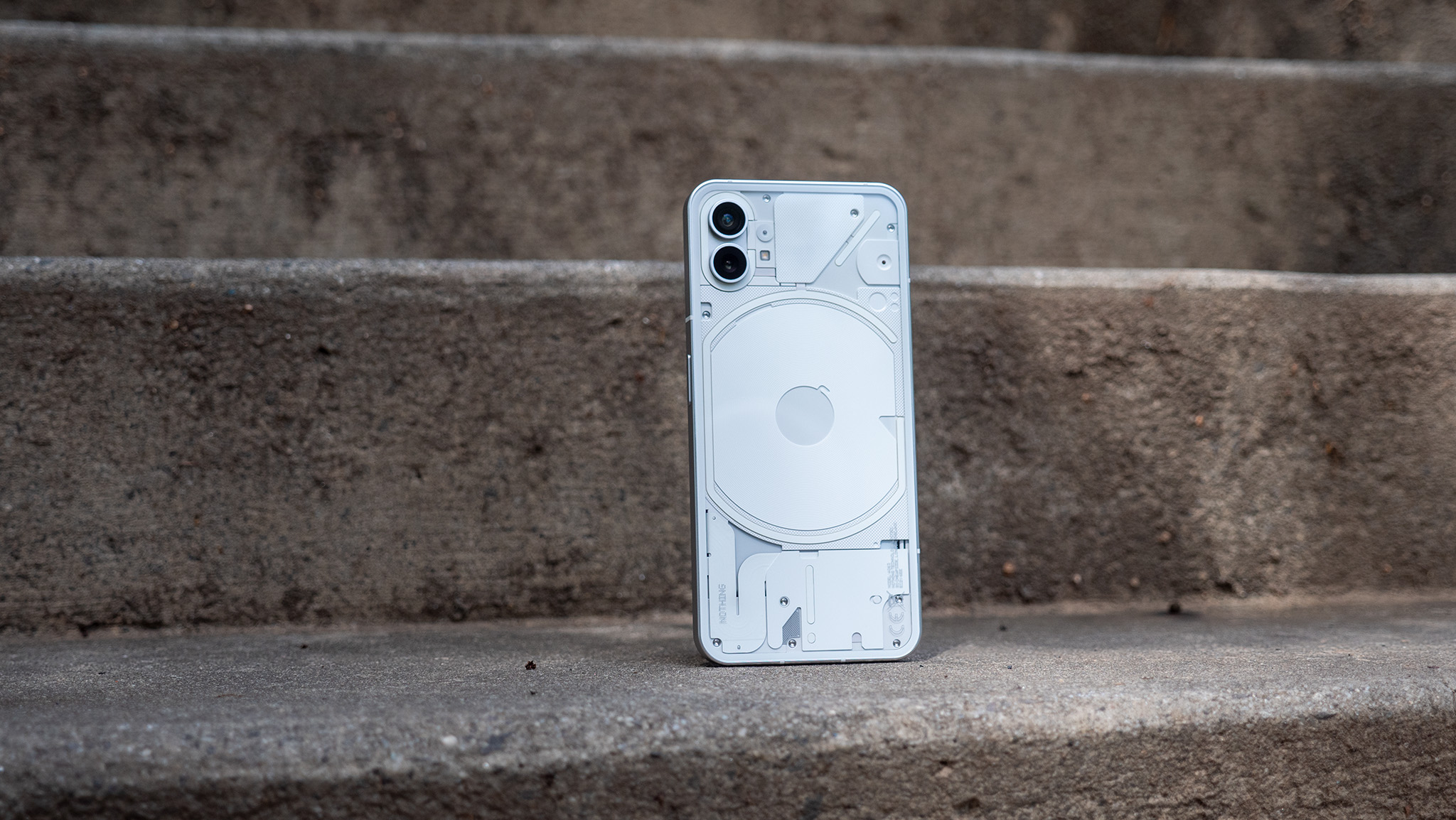
At this price point, there's no shortage of good phones to choose from. Google's best competition is, unsurprisingly, from Samsung. The Galaxy A53 5G can be had for the same price and offers a much better display, all of Samsung's best features, and better battery life. The Galaxy A53's cameras aren't bad by any stretch of the imagination, but they're certainly no Pixel. The Google Tensor in the Pixel 6a also outpaces the Qualcomm chipset in the Galaxy A53 in every area, as well.
If you're looking for something a bit different, the Nothing phone (1) is another admirable choice at a slightly lower price, although this one is only available in parts of Europe, India, and parts of Asia.
Nothing's software is much less feature-rich than Samsung or even Google's, and the camera processing definitely needs work, but it offers wireless charging and better battery life than the Pixel 6a. Its Qualcomm chipset also gets beat by the Google Tensor in the Pixel 6a in every area but it offers a 120Hz display and a stunningly unique phone design.
Google Pixel 6a: Should you buy it?
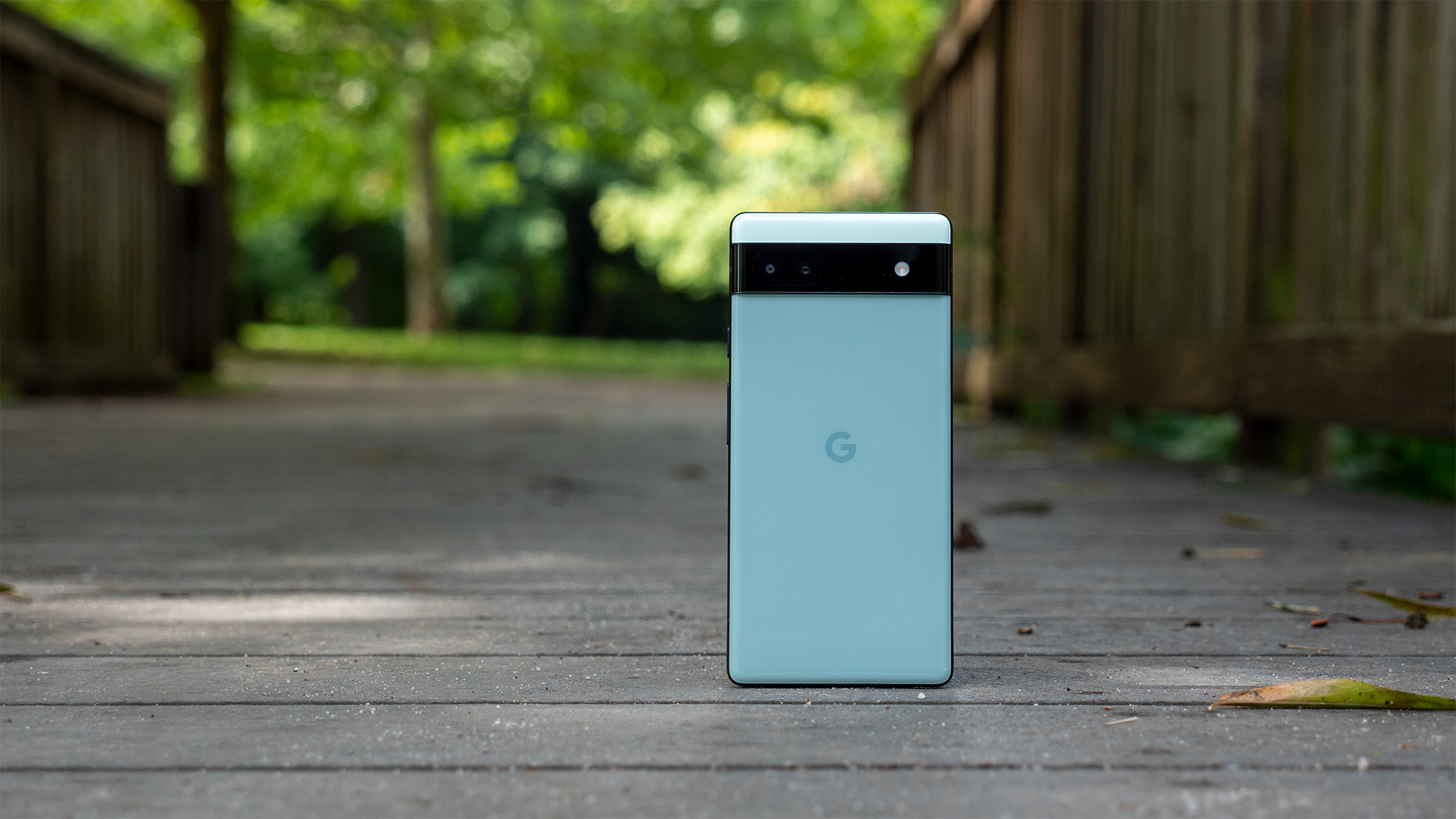
You should buy this if:
- You want the best-performing phone under $500
- You want the best cameras in this price range
- Pixel-specific features appeal to you
You should not buy this if:
- You need two-day battery life
- 60Hz displays bother you
- You need Space Zoom on a camera
The Pixel 6a is, largely, in a class of its own thanks to the Google Tensor processor inside and a superb camera experience that beats everything at this price point (and most beyond). It's paradigm-changing to use a camera this good on a phone this inexpensive. Google's bold design from the Pixel 6 is here and it feels even better at this more compact size. Plus, Google's Pixel-specific features atop Android 12 really help round out an incredible experience.
While I'm definitely disappointed that the fingerprint sensor isn't as good as the competition, it's better than the Pixel 6, and I didn't find myself getting annoyed with it on a regular basis. There's no doubt that the 60Hz panel will drive some people crazy, though. While Google could very well improve the fingerprint sensor in a software update, the 60Hz refresh rate of the display is never going to change.
But, beyond those two complaints, the rest of the Pixel 6a experience is a brilliant one, and has me wondering why I would ever consider another "normal" flagship phone for far more money. For $450, there's simply no better value on the market. Unless you really need better zoom capabilities on the camera, or two-day battery life, I don't see any reason to recommend another Android phone available. Save the money, get a Pixel 6a.
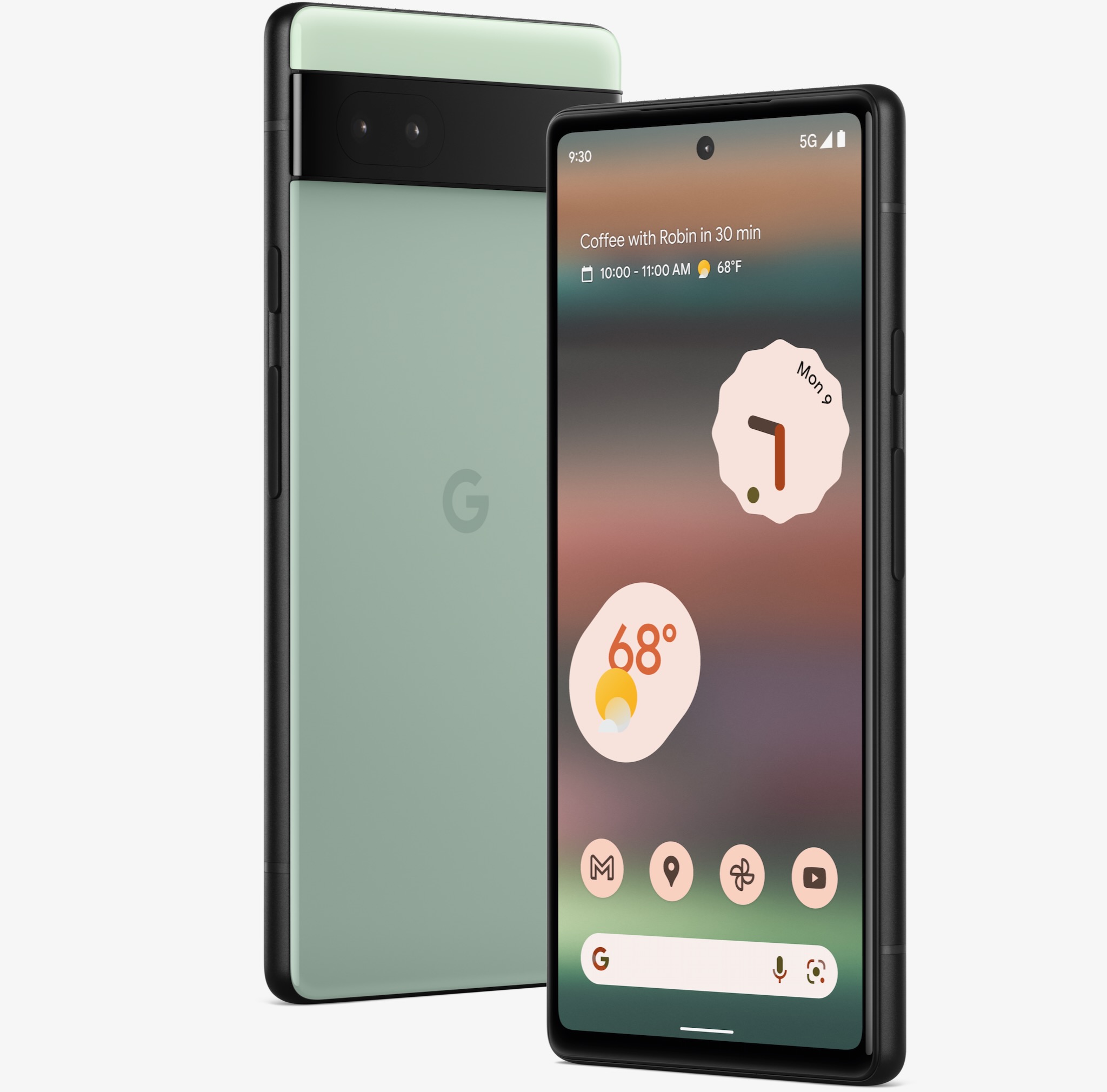
Google redefines expectations of phones under $500 with the Pixel 6a, a powerhouse of a phone with an amazing camera and a flagship-level Google Tensor processor.

